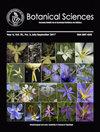利用遥感研究红树林和其他热带湿地森林的方法、潜力和挑战
IF 0.7
4区 生物学
Q3 PLANT SCIENCES
引用次数: 0
摘要
热带湿地森林是脆弱的生态系统,由于全球变暖和其他人为威胁而面临严重风险。因此,收集关于它们的准确和可靠的信息是当务之急。虽然遥感在陆地生态系统研究中显示出巨大的潜力,但基于遥感的湿地森林研究仍处于早期发展阶段。测绘湿地森林,特别是红树林,是这一方法的最初目标,是一项仍然面临方法论挑战的任务。最初仅以航空摄影为基础的湿地森林遥感测绘,在20世纪70年代人造卫星发射后,经历了爆炸式的多样化。随后,高光谱、多光谱、高分辨率和超高分辨率影像的结合,提高了湿地森林制图的精度。准确划分湿地森林范围对于评估其时间动态(损失、收益和水平位移)也是必要的。尽管测绘研究盛行,但目前基于遥感的湿地森林研究提出了新的问题和新的目标,例如通过数学建模来描述和预测湿地森林属性。尽管近几十年来该方法取得了实质性进展,但湿地森林属性的建模和预测仍然是一个探索不足的研究领域。结合主动和被动传感器是一种很有前途的替代方案,可以提供更准确的这些群落属性图像。特别是,激光雷达和基于雷达的技术可能有助于克服旧研究中遇到的困难。今后,我们将看到概念上和方法上的进步,使我们能够克服剩下的挑战。本文章由计算机程序翻译,如有差异,请以英文原文为准。
Approaches, potential, and challenges in the use of remote sensing to study mangrove and other tropical wetland forests
Tropical wetland forests are fragile ecosystems facing critical risks due to global warming and other anthropogenic threats. Hence, gathering accurate and reliable information on them is urgent. Although remote sensing has demonstrated great potential in studying terrestrial ecosystems, remote sensing-based wetland forest research is still in an early stage of development. Mapping wetland forests, particularly mangrove forests, was an initial goal of this approach and is a task that still faces methodological challenges. Initially based on aerial photography only, wetland forest mapping through remote sensing underwent explosive diversification after the launching of artificial satellites in the 1970s. Later, precision in wetland forest mapping increased with the combination of hyperspectral, multispectral, and high and very high resolution imagery. Accurate delimitation of wetland forest extent is also necessary to assess their temporal dynamics (losses, gains, and horizontal displacement). Despite the prevalence of mapping studies, current remote sensing-based research on wetland forests addresses new questions and novel aims, such as describing and predicting wetland forest attributes through mathematical modeling. Although this approach has made substantial progress in recent decades, modeling and predicting wetland forest attributes remain insufficiently explored fields of research. Combining active and passive sensors is a promising alternative to provide a more accurate picture of these communities’ attributes. In particular, LiDAR and radar-based technologies may help overcome difficulties encountered in older studies. In the future, we will witness conceptual and methodological progress that will enable us to surmount the remaining challenges.
求助全文
通过发布文献求助,成功后即可免费获取论文全文。
去求助
来源期刊

Botanical Sciences
Agricultural and Biological Sciences-Plant Science
CiteScore
1.90
自引率
21.40%
发文量
71
审稿时长
16 weeks
期刊介绍:
Botanical Sciences welcomes contributions that present original, previously unpublished results in Botany, including disciplines such as ecology and evolution, structure and function, systematics and taxonomy, in addition to other areas related to the study of plants. Research reviews are also accepted if they summarize recent advances in a subject, discipline, area, or developmental trend of botany; these should include an analytical, critical, and interpretative approach to a specific topic. Acceptance for reviews will be evaluated first by the Review Editor. Opinion Notes and Book Reviews are also published as long as a relevant contribution in the study of Botany is explained and supported.
 求助内容:
求助内容: 应助结果提醒方式:
应助结果提醒方式:


